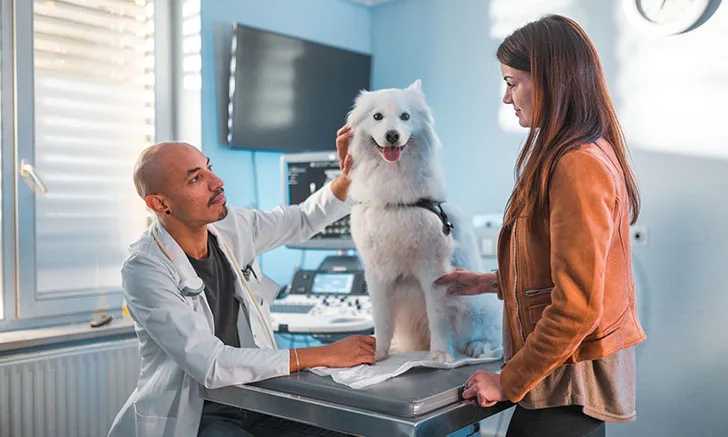Top 5: Tips for Navigating Cost Conversations with Clients

Sponsored by Covetrus
The cost of veterinary care can be a significant stressor for many pet owners, which makes discussing the cost of care with clients a source of stress for the veterinary team as well. A survey by the AVMA found that 30% of pets in the United States do not regularly see a veterinarian annually, with the most common reason cited being the inability to afford the recommended services.1 Having direct conversations about the cost of care with pet owners is critical to helping them understand the value of the services being provided while making sure pets get the care they need.
Below are 5 tips to better navigate cost conversations with pet owners.
1. Acknowledge That Veterinary Care Is Expensive
According to a 2008 study, 62% of pet owners surveyed considered veterinary care to be expensive,2 and according to data from the federal reserve, 32% of Americans are unable to pay an emergency expense of $400 or more without borrowing money or selling something to cover the expense.3 Acknowledging this poses a huge opportunity for veterinary team members to relate to their clients and show empathy.
In the same 2008 study, nearly 7/10 (69%) owners with a strong relationship with their veterinarian said they always follow the recommendations of their veterinarian.2 Acknowledging the divide between the care pet owners would like their pet to receive and what their budget may allow can help the veterinary team better understand the need for working with clients to tailor a treatment plan to each individual case.
2. Address Cost Head-On
When the veterinary team is the first to bring up the cost of care, it allows for open and necessary discussions around veterinary spending. In a consumer world where most spending takes place with cost transparency, offering the same with veterinary care can put owners at ease knowing they will not face any hidden costs. Directly asking pet owners to share any financial concerns they have about the cost of care can help build trust and allow the veterinary team to get on the same page as pet owners.4
3. Emphasize the Importance of Preventive Care
Not only does preventive care (eg, annual examinations, vaccinations, heartworm testing) help keep pets healthy, but it can also help pet owners potentially avoid large bills associated with a sick pet and reduce long-term care costs. Preventive care visits also serve as an opportunity to discuss the lifetime cost of care with pet owners and emphasize that these preventive care services are needed annually. Sharing expectations of the average annual cost of veterinary care with owners can help them better budget for upcoming costs.
4. Discuss Payment Options & Wellness Plans
Available third-party payment plans and in-clinic wellness plans can provide pet owners with “expenditure smoothing,” allowing for the cost of large veterinary bills to be spread out overtime and more easily incorporated into a pet owner’s budget.4 Wellness plans also provide the benefit of bundling services, which can often allow for pet owners to buy services at an overall discounted cost.
5. Discuss Pet Insurance
Pet insurance offers an excellent opportunity for veterinary teams to ensure clients are financially prepared for their pet’s care. Patients with pet insurance tend to visit the veterinarian more often, and their owners tend to spend more on care for their pet as compared with those without insurance.5
According to a 2016 consumer study, 49% of dog or cat owners would be likely or extremely likely to purchase insurance if veterinarians recommended it as a method of payment.6 Explaining the basics of pet insurance and providing approval of insurance from the veterinary team can help pet owners feel empowered to explore their insurance options.
Conclusion
Although addressing cost of care head-on with pet owners may require a concerted effort, it is important in opening the lines of communication to help improve patient care and build a stronger relationship with the pet owner. Offering opportunities for early budgeting and information on third-party payment plans and wellness plans may also help pets get the care they need while resulting in less stress for both the pet owner and veterinary team.
